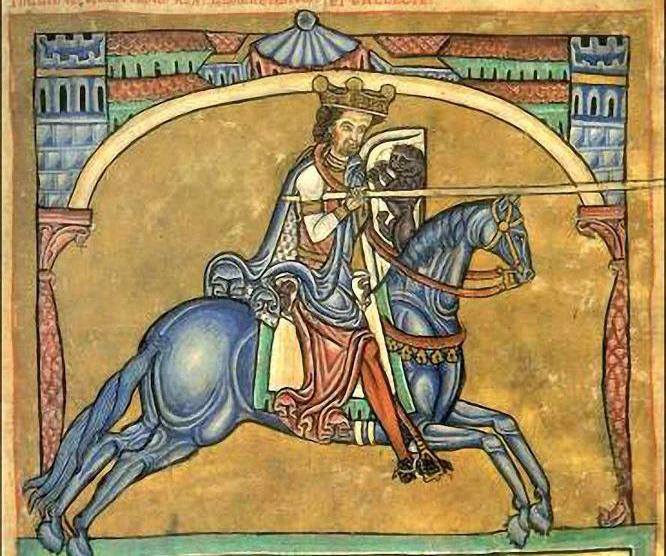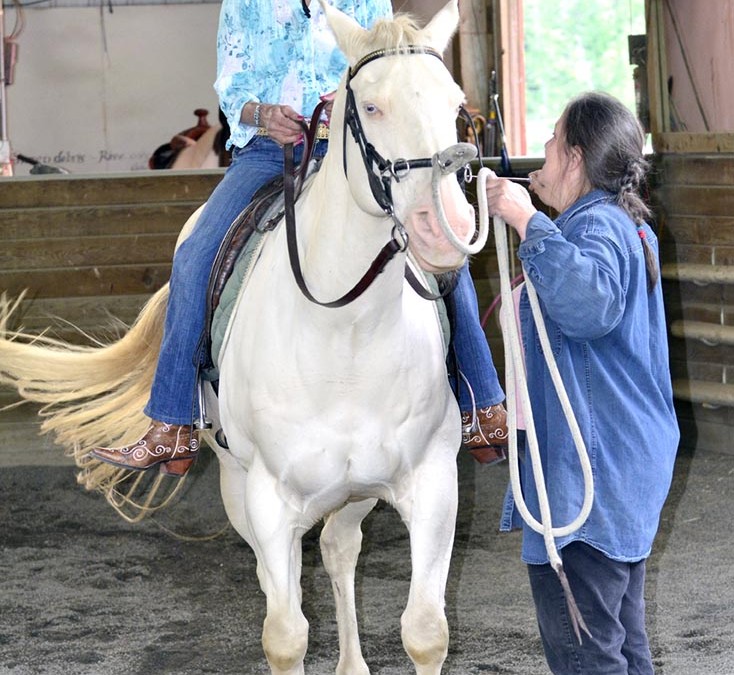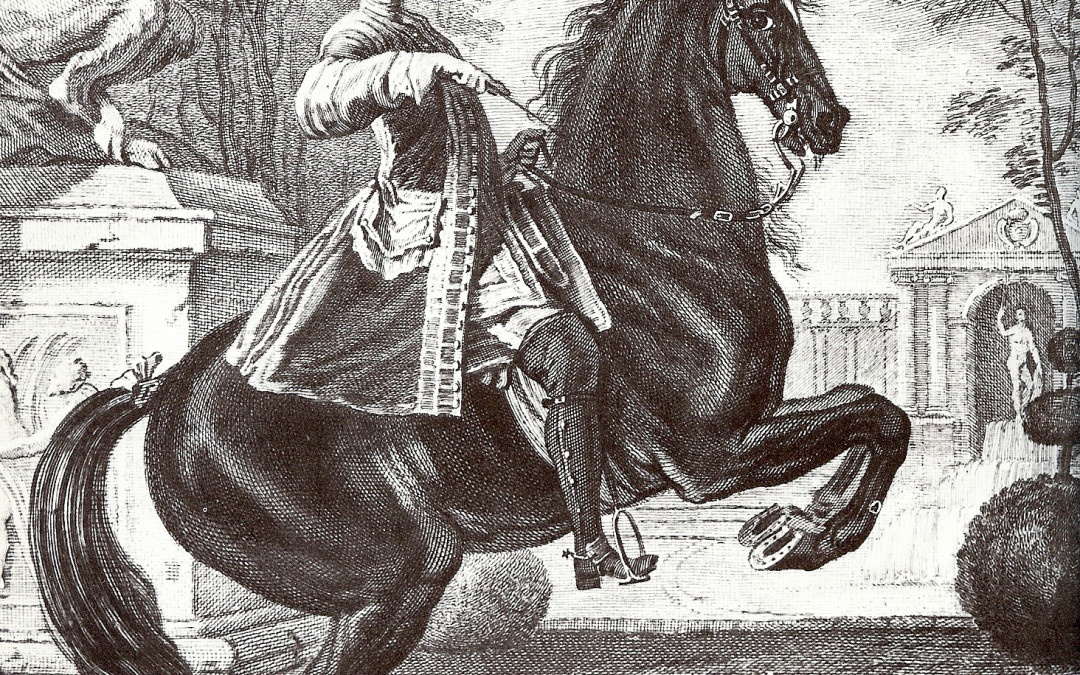
by Craig Stevens | Jul 31, 2015 | Craig Stevens' Blog
Where does it go? Where does it lead? I have studied the literature of equitation for almost 40 years. So many different ways of expressing the work, what is the point? What is it about? Rather than having answers, I have found the questions seem to be getting better. The equestrian literature haunts you after a while. In the daily work, recurrences occur. Masters come to life and jump out, speaking in their own way, joining my conversation with the horse. These masters share as the horse explains and I am in awe. I feel their words as I feel the horse moving, standing breathing. In silence, I listen. In the end what they are saying is simple enough. Gradually, I have been lead, sometimes almost against my will and certainly in disagreement with my own training, to a more and more subtle understanding of kindness and compassion. This is what it is about. This kindness and compassion removes the obstacles to my vision. Dressage theory is merely a conceptual tool, born in the literature, and matured in practice, which point to a non conceptual reality of the experience of being with the horse. It is a loop in which the mind circulates. There is no correct nor incorrect. There is only a horse doing what seems best. Dressage is not a moral battlefield, but a gentle rain of kindness. Seeing this enable one to do that which joins. We link to the movement, the moment and through our mind harmony is found. This art is alive and it is created by the discipline of intelligent practice and daily...

by Craig Stevens | Jul 27, 2015 | Craig Stevens' Blog
In the modern understanding of dressage, calm is downplayed for forwardness in training. To some measure, this “error” is the result of technical difficulties which arise from the use of oppositional aids and laxity in the training of the rider’s seat. While rarely an intentional oversights, the three roads (goals and purposes) to good dressage, as outlined by General L’Hotte, calm, forward and straight are either completely ignored or placed in the wrong order. Generally, forward is placed first and straight is either ignored or considered a unattainable theoretical “thing”. Calm is usually on the back burner and usually the result of the onset of exhaustion in the horse. Much of this is a simple lack of education in the riding public, but we have lost our primary means to connect to the horse by our disregard for clam. It is only in mutual stillness that both the horse and human can take stock of each other and gauge their approach and establish the ground for connection. Calm is essential in practice of dressage. Dressage is an quiescence and is an indispensable tool essential for attaining the highest dressage or the full awakening of the centaur. The centaur/centaur effect is the harmonization and merging of two beings, horse and human, into one. Quiescence, from Latin “quiescent” ‘being still’, (The New Oxford American Dictionary) forms the ground for simple communication. Good dressage begins and ends in the quietness of an almost meditative stillness in both the human and the horse. From the quiescence state of mind forward naturally starts to arise and finds direction through straightness. This makes for the...

by Craig Stevens | Jul 26, 2015 | Craig Stevens' Blog
The practice of dressage as a lifelong discipline requires five types of energy or qualities : strong determination, familiarization with both yourself and your horse, the energy of goodness, reproach, and aspiration. Strong Determination means that you do not waste time. You recognize that you and your practice are one, and that your practice strengthens both you and the horse. It builds a longing for familiarity. Familiarization is the application of strong desire which leads you on the journey. You long for it, and so you are driven to every old book and teacher you can find. Determination over time brings you back to the barn day after day and keeps you there until your exhaustion forces you home. You find and train connection with the horse. The link becomes gold and everything about the presence of the horse becomes familiar and natural. You simply naturally connect. In this next case, you lead and follow the energy of goodness. This means that your body, speech, and mind are all dedicated to propagating kindness and generosity toward yourself and the horse. There is a forgiveness toward the horse and a tolerance of your own mistakes and shortcomings. The strength of reproach is based on reproaching your own ego. You are willing to see all problems as arising from your ego, Resistances do not exist in the horse, but are created and maintained by a trainer/rider whose mind is confused and whose actions are disconnected. A resistor, needs a resistee for who would resist their own body. So it is that we find, live and work in harmony always. Even in...

by Craig Stevens | Jul 23, 2015 | Craig Stevens' Blog
Most students who work with horses quite naturally progress in their insight along the path of dressage, whatever their instruction may be. No matter what technique they start with, their experience and understanding of that technique will naturally evolve over time. Working with and training horses is a natural process. Likewise the education of the trainer, it follows a parallel path. The key point is to know and to find a balance which is true for both the horse and human. Such a balance is never static, and hence the need for relaxation in movement which is called suppleness. What we are doing in this work is a progression to help cultivate awareness. Thus we seek and find the confidence and experience to dynamically find a true stability and lightness in the work. Into this we bend and blend, ultimately to find a the point which can go beyond the technique itself. Good instruction’s purpose is to lead in such a direction. The technique is just a method to help us uncover basic, functional, goodness and the nature of the horse and expand our innate awareness. It is not that the technique, itself, creates good dressage or awareness. Therefore, it is said that in being aware and applying the technique intelligently, we can and should eventually wear the technique out. So it is that the artist stands above his medium, creatively manipulating it. In equitation the medium is both the art and the artist. This art is beyond words. It is not “clever,” rather it is “connected.” Harmony is never forced, rather it flows. Connect, get in the flow and leave aggression behind. This is...

by Craig Stevens | Jul 18, 2015 | Craig Stevens' Blog
“Ponder this: In the use of the aids, each aid has a season. When multiple aids are used, each season must agree. Simple aids are always better because they always know the season. Most of us want only summer aids, but such a thing can never exist. Winter is as important as summer and neither can happen without spring and fall. Enjoying the seasons is the dance of the aids and they flow like circles of love which caress the horse’s mind. Poetry? No, actually a rare technical post. Reflect on this and allow the seasons to flow.” Part of understanding this is to be able to transpose the meaning of “seasons” into workable energy. It explains the dynamic of the interaction of the bit with the horse’s mouth. The seasons are about the quality of this interaction. The energy circulates and while it is psychological in nature, it manifests in how the horse takes and uses the bit. The simplest interaction is in understanding what hot and cold are. A hot mouth is active constantly and a cold one hangs. This is summer and winter. The energy ascends or descends in, respectively, spring or fall. The three touches and non-touch are, on the human side, the manner to bring about what is called, the” mise en main” (placement in hand). This is the rotation and balance of the seasons. This all ties into sensations and so in writing about this, perhaps a rather dry and sterile conception may arise, but this is anything, but that. In today’s understanding, one might say, explore the sensuality which is beyond the...







Recent Comments